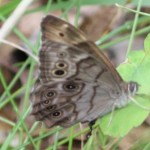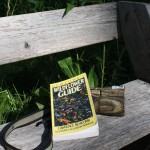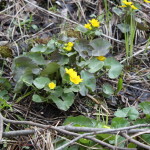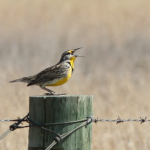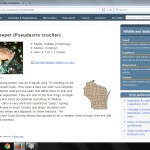
Many states’ natural resource agencies have frog identification tips on their websites
Birds are singing along the upper Baraboo River this week, proclaiming their territories and trying to woo mates. But as I ran along the Elroy-Sparta Trail yesterday, I heard other voices as well. Wood frogs were calling, “quadda-quack, quadda-quack”. Chorus frogs were singing in short, ascending trills, and spring peepers were “peep, peep, peeping” in the wetlands along the trail.
The frogs have recently emerged from hibernation and, like songbirds, are calling for mates. This is a sound of spring that I heard – but didn’t recognize – for most of my life, until one day when my husband brought home a cassette (yes, we’re that old) entitled, “Wisconsin Frogs.” I listened, astonished, to the long trills of the American toad and the various grunts, chirps, and trills of eleven frog species. “I thought all those sounds were insects!” I exclaimed. Continue reading →

